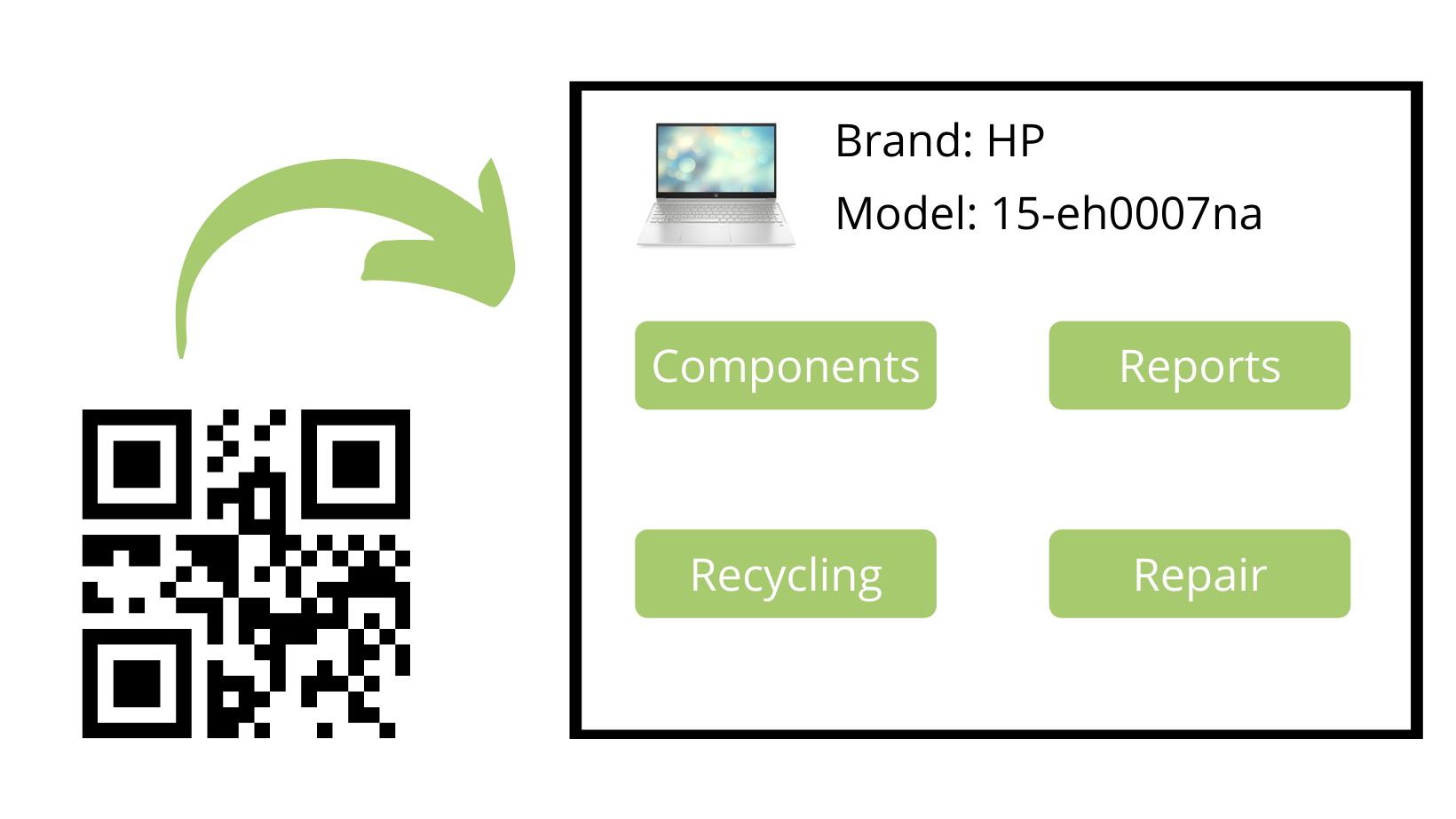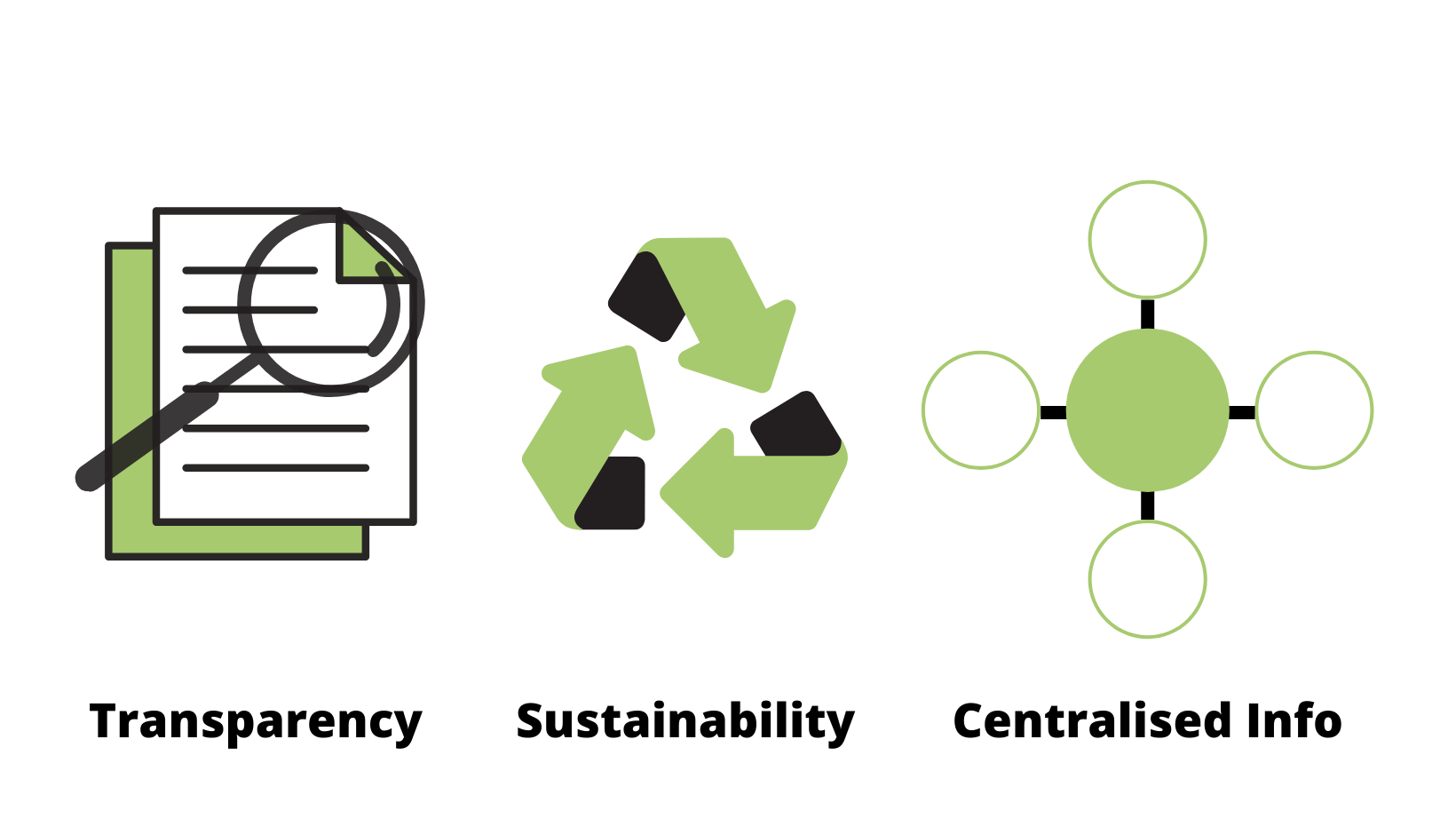3 Key Arguments for Digital Product Passports - Are They the Future Industry Standard for the Circular Economy?
Digital Solutions are critical to the success of the circular economy. These solutions should be easily accessible for everyone, from original equipment manufacturers to final consumers. Could Digital Product Passports be the right solution for a more sustainable economy? Here are the key arguments for a Digital Product Passport.
What is a Digital Product Passport?
A Digital Product Passport (DPP) is a method of digitally recording information about a product. The main purpose of this is to provide an easy to access, centralized bank of information. The DPP’s information will depend on the product. In the IT sector, a DPP would give key information about the materials contained in the product, any repairs that have taken place, and information on how to recycle the product. In other sectors, information will differ. For example, a DPP for packaging will not have information about repairs, but will instead show the percentage of recycled material it contains.
Much of this information is already available. However, this would be a centralized location for all of the information required throughout the value chain. The idea of which is to move closer to a circular economy. Therefore, improved information flows would allow firms to improve their sustainable practices.

Why should we start using Digital Product Passports?
There are several key arguments for the integration of Digital Product Passports (DPPs) into our systems. These arguments detail benefits for different stakeholders throughout the value chain. From manufacturers to the final consumer, DPPs offer solutions which can help everyone to lower their carbon footprint.
Argument 1: Increased Transparency for both Consumers and Businesses
Currently, there is a lack of transparency surrounding the materials used in our products. This is because information regarding a product’s material is not always easily accessible. With the introduction of the ‘Right to Repair’ Directive, information about repairing your electrical goods has become more readily available. However, there is currently no standardized method for recording these repairs. Recyclers further down the value chain may not know about these changes currently. This becomes an issue where these components have different grades of materials. This will make waste streams more efficient as recyclers can easily separate waste into the correct channels.
Argument 2: Improved Sustainable Practices throughout a Product's Lifecycle
Digital Product Passports would play a key role in a more circular economy. This is mainly due to the increased availability of information for every member of the supply chain. But how does this help improve the sustainability of a product? There are several reasons for this:
Material Grades
Recyclers will be able to segregate waste more effectively thanks to an increase in information. This means that raw materials can be recycled based on their actual grades. Currently, there is a significant drop in quality when materials are recycled. This is because higher-grade materials are being recycled as a lower grade. This leads to an overall lower quality of recycled material for future use. Therefore, better reporting is key to improving the quality of recycled material used for future manufacturing. This would reduce the need for virgin raw materials. The material footprint of new products could be lowered by using recycled materials over virgin materials.
Understanding your Carbon Footprint
Digital Product Passports could allow you to better understand your product’s material footprint. For example, you would know how much of the product is made of recycled material. This can help you calculate the environmental impact of your business purchases. Additionally, a DPP could provide comparisons between new products and remanufactured products. This would allow you to calculate your carbon savings. Sustainability is critical to our future. Therefore, being able to quantify our environmental impact is a key consideration for most businesses.
Right to Repair
A Digital Product Passport would make repairing products easier. Repairers would be able to access key information about the components in a product. This will help them to find spare parts for repair. This is important in the IT sector, where components can differ very slightly. An integrated approach to information sharing would ensure that components are replaced properly. Additionally, any alternative components used in repair would be recorded. This would help recyclers sort the waste from the new components. Where repairs have been made during the lifecycle of a product, new components may have alternative materials to the original components. Overall, the implementation of a Digital Product Passport would be a step towards greater circularity in the economy.
Argument 3: Centralized Information Flow
There are currently several information flows required by the government for different products. These include WEEE reporting and energy efficiency ratings. A Digital Product Passport would provide a one-stop shop for all of this information. This would benefit members of every stage of the supply chain. For manufacturers, it would provide a single solution to their initial reporting. Therefore, manufacturers would be able to enter all of the information into one central system. For end users, it provides an easily accessible platform for any issues during the lifecycle of a product. For example, it would provide information for repairs should a problem arise. It would also provide a centralized solution to their environmental reporting. For recyclers, it makes environmental reporting simpler. This would standardize procedures which would benefit all members of the value chain.
Avoid Losing Data
According to David Fitzsimons, director of the European Remanufacturing Council, data loss is one of the biggest threats to the circular economy. After-sales processes can be improved by improving the flow of information,. This is because processes further down the value chain can become more efficient. All of this could be done through a Digital Product Passport.

How Would each Member of the Supply Chain Benefit from a Digital Product Passport?
The Digital Product Passport’s success relies on the benefits that it gives to every stakeholder. Therefore, the benefits must be clear for each stakeholder. Otherwise, it will not be possible to integrate a DPP into the lifecycle of our products. But how would a digital passport benefit each of these stakeholders?
Manufacturers
For the manufacturer, the Digital Product Passport allows them to provide their information in a centralized file. This would aid them in limiting the number of documents that they need to complete in the future. Additionally, a DPP could help manufacturers to better understand the material footprint of their products. In doing so, manufacturers could better understand their product’s lifecycle. This would allow them to make changes that could improve the sustainability of their products. For those who produce environmentally sound products already, this would provide a credible channel for them to make claims about their sustainability. A DPP would give them a competitive advantage, as they would have proof of the sustainability of their products. This method of reporting would differentiate them from other companies who attempt to green-wash their brands.
Repairers
Having an easier means of accessing information about products will primarily benefit repairers. The Digital Product Passport will hold valuable information about the materials and components of a product. For repairers, this will decrease the amount of time taken to seek out replacement parts. This will help repairers to increase the value of their service as information about repairs becomes more readily available. This lines up with the ‘Right to Repair’ Directive, which promotes repair over recycling where possible. As end users become more aware of the carbon footprint of their devices, there will likely be an increased demand for repair in the future.
Recyclers
The benefits for end-of-life handling are clear. With information more readily accessible, recyclers will be better equipped to recover valuable materials from end-of-life products. These services are essential to the circular economy. Recyclers will also benefit from a centralized file for any environmental reporting. Currently, recyclers could have several different reports to complete when carrying out their processes, including WEEE reporting or data destruction certificates.
End Users
The end user benefits from an increase in transparency. This allows them to make more sustainable purchase decisions. This is because they are able to see the material footprint of a product prior to purchasing it. Additionally, an increase in information gives them the opportunity to think circular. This means they are more aware of the repair services available to them, as well as the importance of properly treating end-of-life products.
How Should a Digital Product Passport Work?
For a Digital Product Passport to work and deliver the value that is required, it would need to be easy to access. This is so that users can find information quickly and efficiently. This information should be provided through QR codes where both consumers and businesses can quickly access the information required for repairs or for recycling processes.
The information needs to be at two different levels: One level for consumers which is easy to digest and with the key information about replacement parts and warranty information. On the other hand, another level of information for businesses the materials used in the product is required.